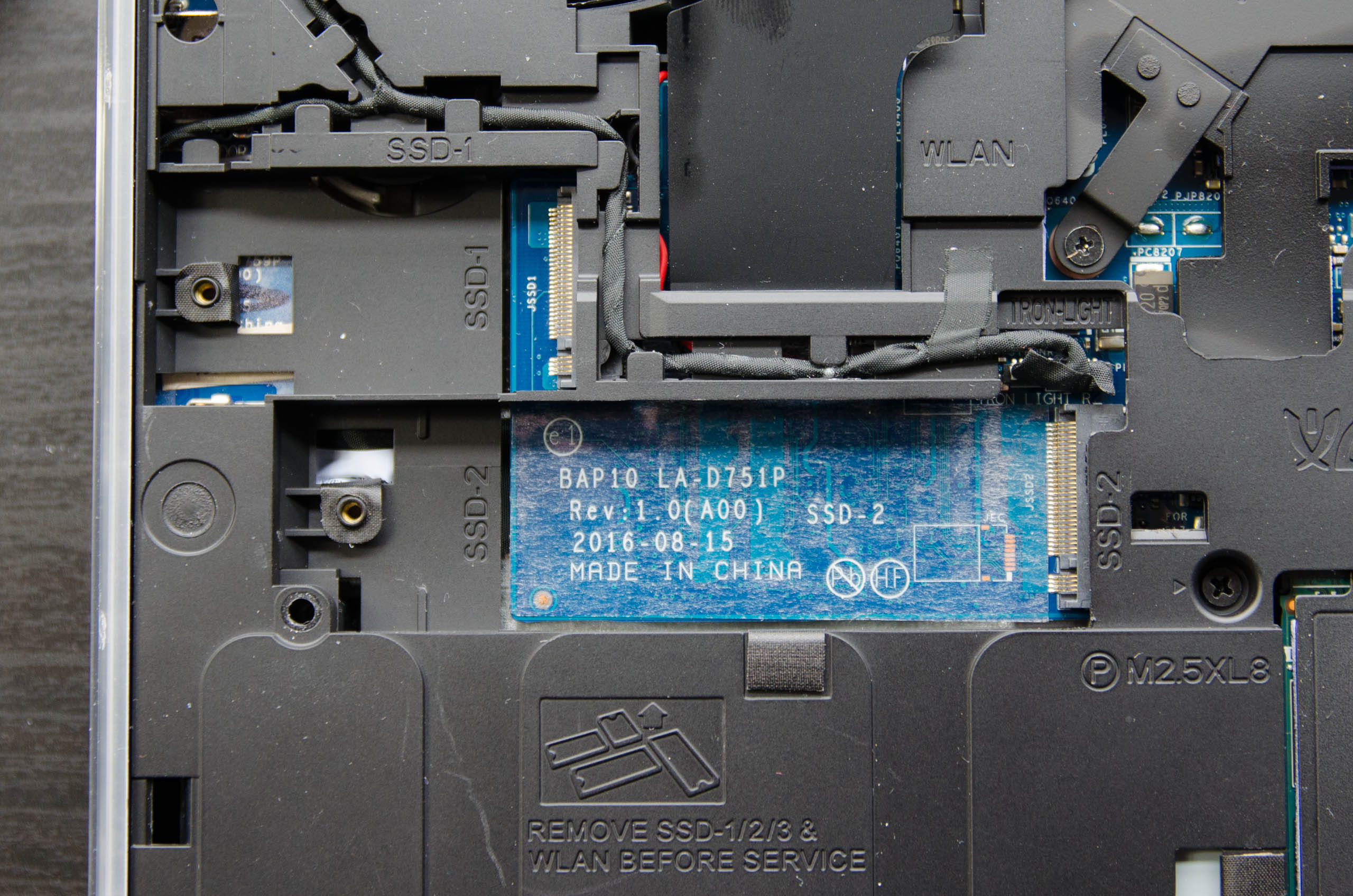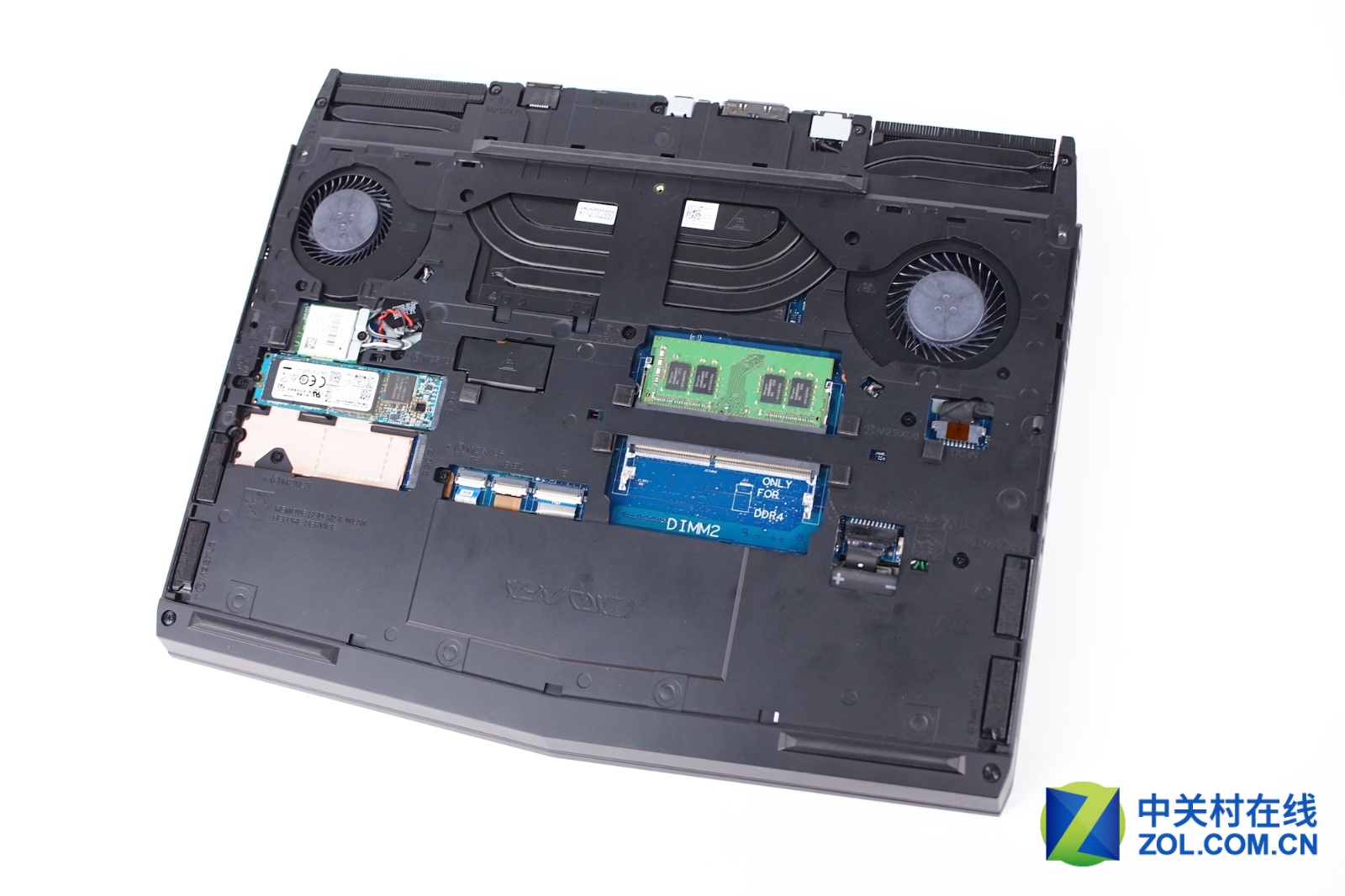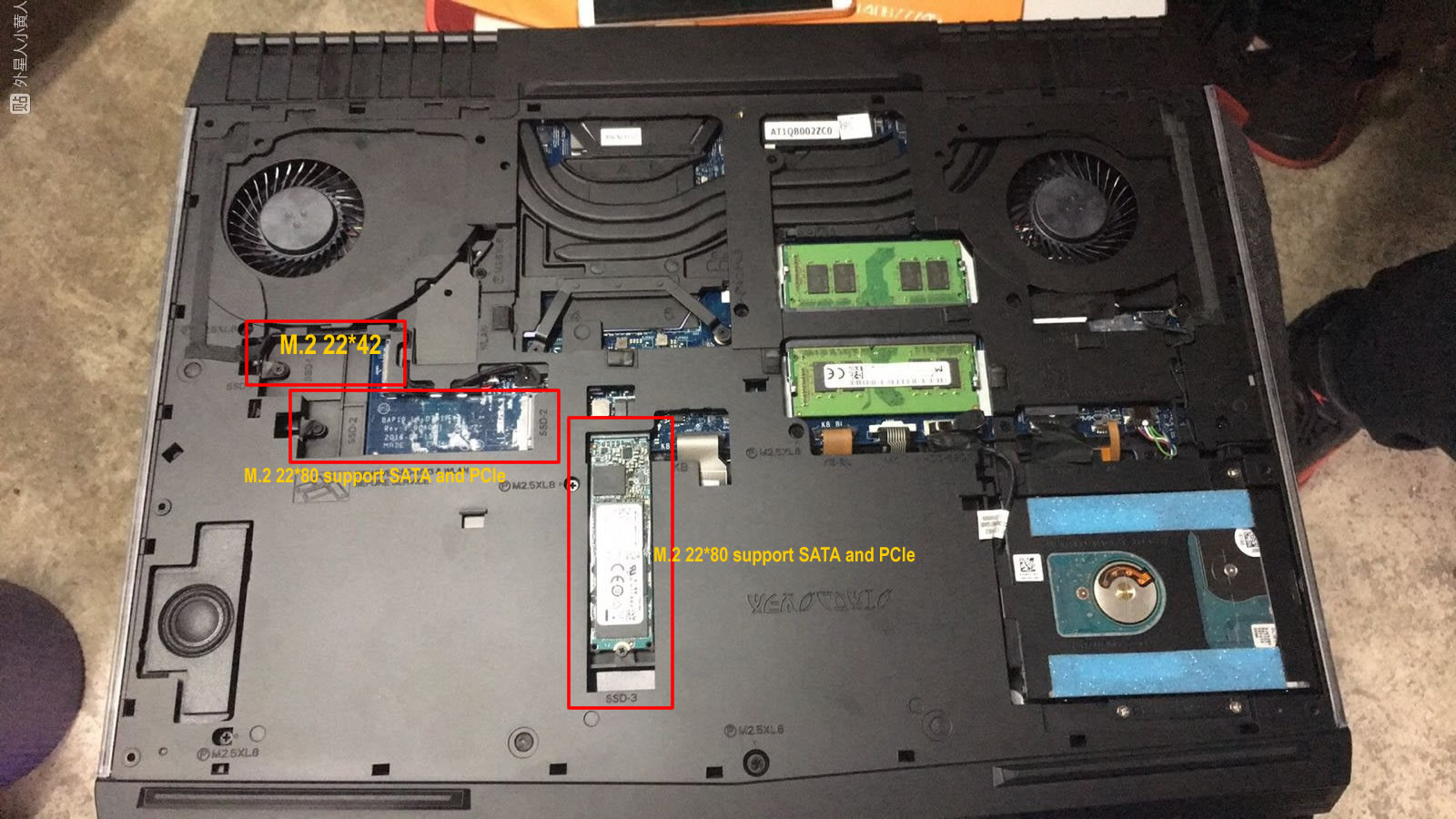Alienware Ssd Slots
There are no differences between the 17-inch Alienware 17 R4 and the 15-inch Alienware 15 R3 in terms of storage options. There are three M.2 SSD slots (2x 2280 + 1x 2260) all supporting the latest PCIe NVMe standard while the 2.5-inch bay is just one. Our unit shipped with HGST 1TB @7200 rpm and 512GB PCIe NVMe Samsung PM961 SSD (2280). Crucial Memory and SSD upgrades - 100% Compatibility Guaranteed for alienware alienware-desktops. (3 DIMM Slot) AURORA (DDR3) AURORA 3500.

SSDs are ubiquitous in modern computers, from powerful gaming PCs to professional laptops.
However, if you want to move from mechanical to solid state storage, there are a few things to take into account.
SSDs appear in a multiple form factors, from 2.5-inch SATA drives to RAM-like M.2 modules.
All these devices use the same NAND flash storage technology, but differ in the way the memory is accessed and how they connect.
Before buying an SSD, here’s an overview of what is on offer.
Specifications
The durability and capabilities of an SSD are detailed in its specifications, as shown below.
- Storage (GB/TB): Total capacity.
- Form Factor: The shape and size.
- Interface: The transfer protocol.
- Sequential Read/Write (MB/s): The speed the drive reads and writes data.
- Random Read/Write (IOPS): The average number of I/O operations per second.
- Mean Time to Failure (hours): The average expected lifetime.
- Endurance (TBW): The expected lifespan measured in TB written.
SATA Drive
A SATA SSD has the same form factor as a standard hard drive and uses a SATA cable to connect to the motherboard.
These SSDs commonly come in the 2.5-inch form factor (the size of a laptop’s hard drive).
The latest SATA SSDs use the SATA revision 3.0 interface, which has a maximum transfer speed of 600MB/s.
These drives are relatively cheap compared to other form factors and are commonly found in professional laptops and mid-range desktop PCs.
M.2 Module
The M.2 (formerly NGFF) SSD form factor was developed to provide support for SATA and PCIe interfaces.
M.2 SSDs are long, thin PCBs with multiple NAND Flash modules, and connect via an M.2 connector to an M.2 slot on the motherboard.
There are several types of interfaces and controllers used by M.2 SSDs, mainly:
- SATA
- PCIe
- NVMe
M.2 SATA drives do not look like conventional SATA drives and connect to an M.2 port, but use the same interface and are also limited by the 600MB/s cap.
M.2 PCIe SSDs use the PCI Express lanes exposed via an M.2 slot to connect to the computer and provide increased performance.
M.2 PCIe SSDs can use two different controllers: AHCI and NVMe.
AHCI PCIe SSDs provide backward compatibility for systems with SATA support, but have limited efficiency due to AHCI being designed for mechanical drives.
NVMe PCIe SSDs have vastly superior performance, as the interface was designed for high-speed flash storage.
M.2 PCIe NVMe SSDs can boast transfer speeds many times that of conventional SSDs and feature thousands of processing queues instead of the single queue provided by older interfaces.
PCIe Card
The final form factor is the dedicated PCIe card.
These SSD’s are large, single-slot storage drives which connect to a PCI Express slot on your motherboard – similar to a graphics card.
Dedicated cards use the NVMe interface and usually include heat sinks to dissipate heat.

These devices can usually only fit in desktop PCs and are used in workstations or enterprise systems.
The development of smaller NVMe SSDs and the increasing popularity of the M.2 form factor have negated the need for the average consumer to purchase a dedicated PCIe SSD card.
This article first appeared on MyBroadband and is republished with permission.
Now read: WD launches SSDs in South Africa – Pricing and details
Forum discussionQuick Navigation:
The Problem to Clone M2 SSD
What is M.2 SSD?
Before learning how to clone M.2 SSD to M.2 SSD, you may want to know these information about M.2 SSD.
M.2 SSD (formerly known as Next Generation Form Factor (NGFF) SSDs) are smaller and more suited for modern ultraportable devices (Ultrabooks and tablets) compared to older SATA SSDs as they allow for different module widths and lengths to adjust for different connectors. As a result, M2 SSDs are known for their small size and fast speeds.

Why clone M.2 SSD to larger M.2 SSD?
Generally speaking, many small devices like laptops, Ultrabooks, and tablets use a small capacity M.2 SSD drive as their boot drive and HDDs for storage. Once you have the OS, applications, and games installed, you’ll soon find that the drive has run out of space or has very slow respond. To fix this you will need to clone M.2 SSD to larger M.2 SSD drive, then you will:
Get more storage space.
Speed up your system.
Get shorter boot time.
Best M.2 SSD Cloner - AOMEI Backupper
To clone to M.2 SSD safely, you could try the specialist M.2 SSD cloner in Windows 10, 8, 7, Vista, and XP - AOMEI Backupper Professional - that clones everything (including Windows OS, installed programs, and personal files, etc.) from a M.2 SSD drive to new M.2 SSD without affecting the original OS and data.
Besides, it will clone to M.2 SSD with simple clicks, accelerate the overall performance for the M.2 SSD with SSD Alignment, and ensure it's bootable after clone without any issues.
Alienware 15 R3 Ssd Slots
Please download AOMEI Backupper Professional 30 day free trial and have it a go (Clone features in free trial can only be demonstrated, please upgrade to enjoy):
Download Free Trial
Win 10/8.1/8/7/XP
Secure Download
How to Clone M.2 SSD to M.2 SSD Easily in Windows 10/8/7?
Here is the step-by-step guide to safely clone M.2 SSD to larger M.2 SSD in Windows 10/8/7:
✤✤Before cloning M.2 SSD to larger M.2 SSD, do the following✤✤:
☂Make sure that the new larger M.2 SSD is compatible with your motherboard, or consult your computer manufacturer.
☂Install the larger M.2 SSD correctly. Please disconnect battery or cut off the power supply before installing.
>> On a laptop, open M.2 slot, slide and fix the SSD.
>> On a desktop, open the host cover, find the M.2 connector (labeled with SATA/PCIe), and install the SSD.
☂Prepare an M.2 to USB adapter to connect the larger M.2 SSD with machine if there is only one M.2 slot on your computer.
☂Initial the M.2 SSD in Disk Management and format with MBR or GPT partition style according to your demands.

Step 1. Perform this M.2 SSD cloner after installation, select Clone > Disk Clone. Click System Clone to move operating system only to another M.2 SSD if you prefer.
Step 2. Select the M.2 SSD system disk as the source disk and hit Next to continue.
Step 3. Choose the larger M.2 SSD as the target disk, and then press Next to continue.
★Tips: If there is any data on the destination M.2 disk, it will be erased during the cloning process. Please backup files before the M.2 SSD cloning.
Step 4. Tick SSD Alignment to speed up for M.2 SSD, and then press Start Clone to safely clone M.2 SSD to larger M.2 SSD in Windows 10/8/7.
Usually, this only take a short amount of time, but the larger the disk is, the longer time will be. Because the cloning time depends on the data size of the source m.2 drive.
★Helpful Tips:
1. Sector by sector clone: It enables you to clone all the sectors (blocks) on the source M.2 SSD even it’s blank or bad sector, and much longer time will spend. Uncheck this option will skip the bad sectors if there exists.
2. You could click on Edit Partitions to resize the partitions on the destination disk and you could fully use the storage space on the larger M.2 SSD. There are three options that you may need:
✍Copy without resizing partitions: it’s selected by default. There will be an unallocated space available after cloning smaller disk to larger disk if this option checked. Then, you could merge unallocated space to C drive or other existing partitions, or even create a new partition to store data separately.
✍Add unused space to all partitions.
✍Manually adjust partition size.
If you would like to adjust the partition size automatically during the cloning process, please select the second option or third option.
How to Boot from Cloned Larger M.2 SSD?
Alienware 17 R5 Ssd Slots
After the cloning process has finished, to boot from the cloned larger M.2 SSD correctly, do the following:
For the computer that only one M.2 slot: shut down your computer, remove the old M.2 SSD, and replace with the newly cloned larger M.2 SSD, boot from the cloned M.2 SSD.
For the computer that has more than one M.2 slot: Restart your computer and repeatedly press a certain key (usually F2, F10, F12, ESC, DEL, etc.) to enter BIOS or UEFI BIOS, change boot priority to the cloned larger M.2 drive.
Remember to replace the mounting screws to secure the M.2 SSD drive in your machine.
Alienware 17 R5 Ssd Slots

Alienware 17r4 Ssd Slots
Now you have mastered cloning M.2 SSD to M.2 SSD, you might want to try cloning a larger HDD to smaller SSD, make sure the smaller SSD can hold all the data from the larger HDD, cloning a specific partition to the target disk using the Partition Clonefunction, or even cloning MBR disk to GPT disk, or vice versa.
Another secure way to perform M.2 SSD to M.2 SSD migration when there is only one M.2 slot is that backup M.2 SSD, replace smaller M.2 SSD with larger one, and then restore image to the larger M.2 SSD. AOMEI Backupper Professional could do the same task. For detailed steps, please refer to how to upgrade laptop drive via backup and restore.
Summing Up
To clone M.2 SSD to M.2 SSD safely, you need to first check that the new M.2 SSD drive is compatible with your motherboard and carefully install the drive correctly. Next, use powerful M.2 cloner like AOMEI Backupper Professional to clone the disk ensuring that it will boot without any issues.
If you are using Windows Server 2003, 2008, 2012, 2016, 2019 (including R2), SBS 2003, 2008, 2011, please try AOMEI Backupper Server and follow the same steps above, and more advanced features provided, command line backup/restore/clone, universal restore, real time file sync, etc.